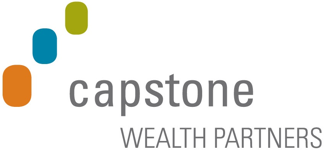Big Changes in College Financial Aid
By Joe Messinger, CFP®
September 16, 2016
Starting this fall (Editor’s note: This article originally posted in 2016), students will be able to file the famously complex Free Application for Federal Student Aid (FAFSA) for financial aid months earlier using older tax data. This year for the first time the FAFSA will open in October instead of January as it has in the past.
This change impacts all college students currently enrolled, the 2017 high school graduating class, and all grad classes in the future. This change is meant to make the college funding process easier and more transparent for families.
Why the change?
In years past, high school seniors would get an acceptance letter as early as December of their senior year but would not receive the full financial aid award letter until mid April! Then they would have to make a decision by May 1st. You know how patient teenagers are right?
One of the primary goals of moving up the date is so that families will have a clearer financial picture much sooner when selecting colleges. For high school seniors, applying for college in the fall will more closely align with knowing the financial aid available to your family. No more waiting in college limbo.
When families complete the FAFSA, they will not have to use estimated tax numbers as they did in the past and then revise the FAFSA with actual numbers afterwards. What a pain that was.
Now, you will use the actual tax returns submitted for the prior year—known as the “prior-prior” year returns. For example, in October 2016 you will be applying for financial aid for the 2017-18 academic year. The “Prior-prior year” tax returns are those submitted for the 2015 tax year. It sounds confusing, but it actually makes a lot of sense.
Why you shouldn’t wait
Although some colleges have not moved up their financial aid deadlines to coincide with the new October 1st FAFSA date, filling out your FAFSA as soon as possible is still a good idea. You will have an edge for the first-come, first-serve aid out there. And simply getting it over and done with is valuable. One less thing to fret about in a busy senior year!
For those families with freshmen, sophomores, and juniors, this change affects you too. It’s all about proactive planning to create an ideal outcome for you and your students! Don’t wait until fall of your student’s senior year. It will be too late!
4 Things You Can Be Doing Now…
1. Financial aid and tax aid planning for college need to begin freshmen year of high school. If you have any opportunities for maximizing your financial aid package, the most important planning year will now be the spring of your sophomore year and the fall of your junior year. This period will be the tax year used on the FAFSA as your “base year”.
Why is that year so important? Your financial aid filing for your college freshmen year is what we call your “base year”. Your base year is critical as colleges frequently award the most aid to incoming freshmen, and often the aid is in 4-year renewable scholarships. You still need to fill out the FAFSA each year, but you want to look as poor as possible in your freshmen year, as it forms the basis of your financial aid package for all four years.
2. Use an EFC (Expected Family Contribution) estimator on websites like collegeboard.org or the Net Price Calculators that are now required to be on each college’s website to get an estimate of what you will actually be expected to pay. Don’t rule out schools based on the “sticker price”. Focus on the “net price” after scholarships and grants are awarded.
3. After you have done your homework, have the “college money” conversation in your high school junior year at the latest so parents and students can have a dialogue about realistically affordable colleges. This is not a conversation you want to have after they have been accepted to a great school that you cannot afford.
4. Create a comprehensive 4-year college funding strategy incorporating college selection, financial aid, asset and income tax strategies, and a plan to minimize your student’s debt.
Take matters into your own hands
Future FAFSA changes meant to simplify the questions and streamline the process are constantly under discussion. In the meantime, take matters into your own hands by having a plan. Know your college budget and ensure your student graduates on time with manageable student loan debt without robbing mom and dad’s retirement!
RELATED ARTICLES
College Planning
College Fairs: A Useful Tool for All High School Students
September 12, 2024



